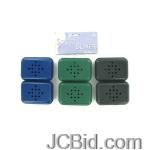Learning to use a good automotive OBD2 Scanner is one of the best ways you can continually invest in the health of your car. In addition, it can help you in protecting hundreds or thousands of dollars in auto maintenance. The OBD2 scanner is the second version of the On-Board Diagnostics, which monitors engine functions.
In the event of a problem with the engine, the “Engine Check” light appears. The OBD2 scanner can access the resulting crash codes in the vehicle’s diagnostic computer or even the train control module. This handheld computer can simply connect to the media stated in 1996 and later. Early cars use old diagnostic techniques that vary according to the manufacturer of the vehicle.
OBD2 scanning engines can be used by any car owner plus a whole array of costs and functions. Professional mechanics are more likely to reach the general reader. Regardless of the type of person reading the code you have the way it really is used is pretty much the same.
How to use OBD2 Scanner tips
First, you will need the cable to connect to the scanner or PC with the OBD2 software system. Most scanners are universal because they will read the most popular codes, but some of these may only use certain types of vehicles so make sure that the scanner you are working with is the most common your Car. Make sure the car’s engine is turned off before linking you.
Locate the OBD2 system connector plug location. If your vehicle certainly complies with the OBD2 protocol, it has a 16-pin sub-connector that is usually close to the center console for the driver side. Different vehicles may have different positions, such as under the steering wheel, behind the ashtray, between the front seats or under the driver’s seat. Instant online checks will help you find the location for the particular car in case it is not easily noticeable.
Check the connection plug of a particular vehicle to ensure that all the necessary pins can be found. Almost all of them are 4 plus 5 pin for grounding and 16 pin for power supply.
Connect your OBD2 scanner to your car’s computer. Wiring your 16-pin connector at one end should hang up the women’s port on your car. Connect the other end of the cable to your scanner afterwards.
An alternative to a handheld scanner is to connect to a computer that has an OBD2 software system attached to it. You will need a wire with a 16-pin connector with one end attached to another USB port to attach to your computer. Bluetooth connectivity is possible so that this application is also possible.
Once you have connected it can take a short amount of time for the reader to initialize. Your scanner can check your car’s computer to find out what protocols are often needed as well as make connections. Specific scanners read the error codes stored in the car’s computer and displayed on the screen.
To explain the specific code you may have to seek advice from the manual for the automobile although some scanners provide information for the underlying code. Some scan device manufacturers provide inputting applications that will translate program code and provide repair procedures that are defined on that code.
Step by step to properly use the OBD2 scanner
how to connect obd2 scanner to DLC
Step 01: Make sure the car is turned off. Locate the data link underneath the steering wheel. It’s a wall outlet that allows the use of a special diagnostic computer, which most vehicles are sure to drive.
Step 02: Connect the OBD2 scanner to the Data Link Connector. The scanner cord in a 16-pin plug should match the natural socket.
Step 03: Insert the car key into the ignition cylinder and change it to “On”. For brand OBD2 equipment, you need to turn on the engine and invite it to idle.
Step 04: Turn on these devices, if this does not automatically activate itself.
Step 05: Enter the command to “read” or even “scan” the system diagnostics. How exactly to do this depends on the brand of the OBD2 device you are using. The design button changes from design to model, plus some devices can work with a menu system. A guide to getting the correct code will be in your device’s manual.
Step 06: Read through the hassle code on the reading screen of your device. Duplicate the code types down on a sheet related to paper. Some devices come with a USB port and can be connected directly to certain types of computers via USB cable. If you have this experienced OBD2 scanner, connect the device between the desktop in the scanner’s manual.
Step 07: Find the trouble code in your device’s manual. Often, generic OBD2 codes can be found in an annex on the back. These are general requirements that are standardized for all OBD2 cars. Manufacturers also have a new supplement. Customer’s guide will not have these types of codes. You will have to search them on the web or in a maintenance manual for the particular vehicle.
Step 08: Transform the vehicle’s electrical system. In case you have to start the engine, turn it off. Disconnect the OBD2 scanner’s diagnostic cord to the socket and turn off the device.
Conclusion
Finally, I think the above tips will help you use the OBD2 scanner appropriately. Therefore, it is important that the Professional Car Diagnostic Tool is usually a great device to withstand your will. In case you are an expert in repairing mechanical problems or simply want to know something along with your car (rather than being cheated by the dick seller) then self I work and get today. The amount of money you can keep for long periods of time will not be a substitute.






 RSS Feed
RSS Feed